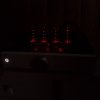I probably could have worded that better- my point was simply that a design can be a proper voltage source and the fact that it may not be able to double power from its 8 Ohm full power level to 4 Ohms does not affect that. Heck, there are tube amps that act as voltage sources too, but instead of doubling their power from 8 Ohms going down, whatever their 4 Ohm power is they cut that in half as the load impedance is doubled. Expensive way to do it IMO.
Oh ok, i get what you meant. Yes, you do not have to double the power and it will still work fine. Eg. 100w 8ohms but 150w 4ohms... 150w is still alot of power and its not like you will hit this limit unless you are playing at ear bursting volume.

